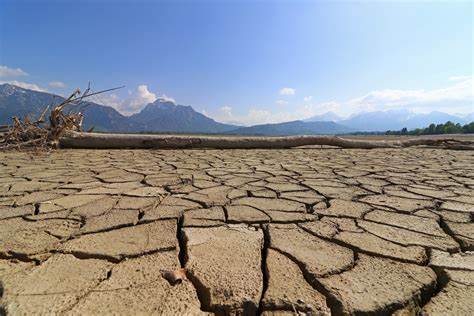
The characteristics of human-caused global warming are evident in the growing and widespread heat wave that is impacting around 150 million people in the United States, spanning from Wisconsin to Washington, DC.

Kathmandu. The characteristics of human-caused global warming are evident in the growing and widespread heat wave that is impacting around 150 million people in the United States, spanning from Wisconsin to Washington, DC.
In addition to the potential for several all-time June high temperature records to be tied or broken, hundreds of daily temperature records are in danger over the next few days, especially along the East Coast.
Another indication of climate change is the setting of new records for warm nightly low temperatures. The health effects of heat waves are made worse by the fact that nighttime temperatures have been rising more quickly than daytime temperatures. This is particularly true in urban areas, where the urban heat island effect maintains high temperatures all night long.
Global warming has increased the likelihood and severity of scorching high temperatures in Western Europe, which almost coincide with the US heat wave.
Heat waves are the type of extreme weather that scientists can most consistently link to climate change brought on by pollution from fossil fuels, out of all the other types, such as droughts, floods, and hurricanes. While the likelihood and intensity of record cold extremes decline with global warming, the likelihood of extreme heat events rises sharply.
According to climate scientist Fredi Otto, who is in charge of the World Weather Attribution project, an international endeavor that looks at how climate change affects specific weather events, “the physical process of how more greenhouse gases in the atmosphere lead to hotter and more frequent heat waves is well-understood and straightforward.”
She claimed that every heatwave that is happening now is hotter than it would have been in the absence of climate change brought on by humans.
As global average temperatures continue to rise, much more extreme heat is anticipated to occur in the upcoming decades. The heat waves we are currently experiencing are caused by global warming of 1.2 degrees Celsius (2.16 degrees Fahrenheit).
Researchers have discovered in recent years that without the warming caused by global warming, certain heat waves would not have occurred. Climate pollution has caused some to become hotter and tens to hundreds of times more likely than they otherwise would have been.
This was the case, among other more recent incidents, with the 2021 heat wave in the Pacific Northwest, the 2020 Siberian heat wave, and the 2022 heat wave in the United Kingdom.
In summary, heat waves are becoming more frequent, severe, and prolonged due to climate change. They are growing more deadly since they are occurring earlier and later in the summer season and are also getting more humid in many places of the planet.
According to some research, during the summer months in the Northern Hemisphere, global weather patterns that allow for simultaneous heat waves on many continents—like the heat waves that occurred in the US and Europe this month—are growing increasingly frequent.
The UK heat wave last month, which reached 92 degrees Fahrenheit in Surrey, England, was 100 times more likely to occur in the current climate than it was before the human-caused global warming era, according to a quick scientific analysis.
According to the data, the likelihood of three consecutive days with temperatures exceeding 82 degrees in southeast England has increased by around 100 times since the pre-global warming era, before people started using fossil fuels like coal, oil, and gas for energy.
Heat waves are the most deadly type of extreme weather in the United States. Because it is the first of the season and brings conditions more prevalent in the height of summer rather than in June, the ongoing one is more dangerous.
Heat indices might reach 110 degrees or higher in some places, while temperatures along the Amtrak Acela route from Washington to New York City are expected to rise close to or into the triple digits. Long periods of time spent outside will be risky under such circumstances, and the public health risk will be exacerbated by the absence of nightly heat respite.
Without the use of fossil fuels, heat waves that are currently occurring in most parts of the world outside of the tropics, such as the US and the UK, would have been up to seven degrees colder, according to Otto.
According to Otto, “Human-induced climate change puts a huge burden on societies through its influence on extreme heat, leading to thousands of premature deaths, as well as a large strain on infrastructure and ecosystems.” “Extreme heat is also causing significant losses in productivity and agricultural losses.”
Otto sounded an additional note of caution: Computer models “severely underestimate” the extreme heat trends we are seeing so far, which means projections for future extreme heat are likely also underestimates.
This is believed to be due to changes in aerosols, which are air pollutants, and weather patterns, which may also be impacted by climate change.
In the context of climate change, Michael Mann, a climate researcher at the University of Pennsylvania, has also discovered that models have trouble projecting heat waves. Persistent heat domes, such as the one that is currently occurring, have become more common in recent years, according to his research, and the climate models have hardly ever detected them.
He told CNN that climate models are probably underestimating the connection between climate change and current, persistent summer weather extremes as well as the possibility of future increases in these extremes.